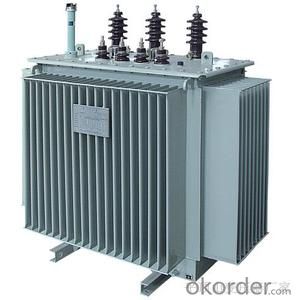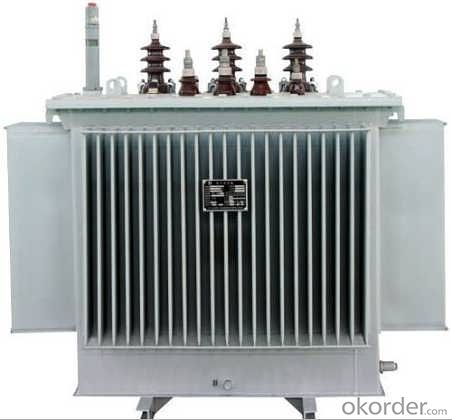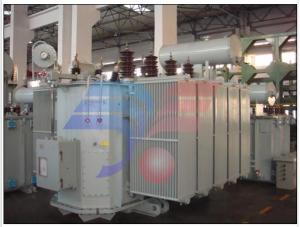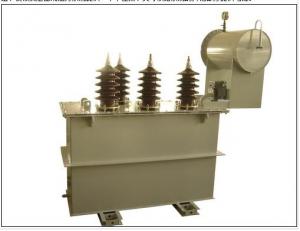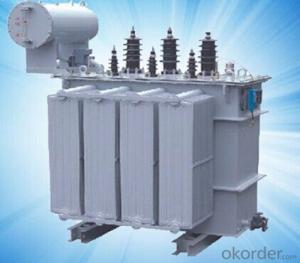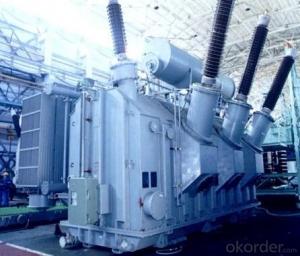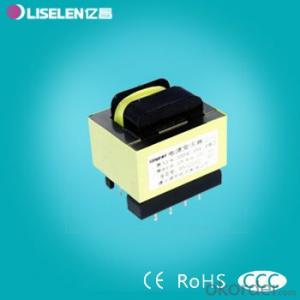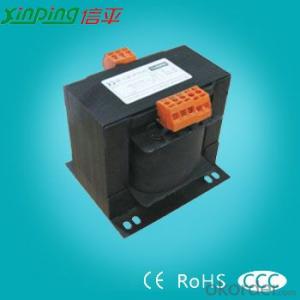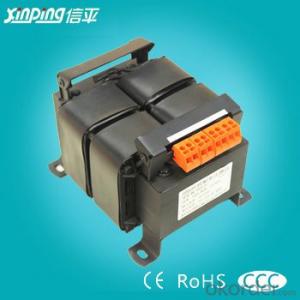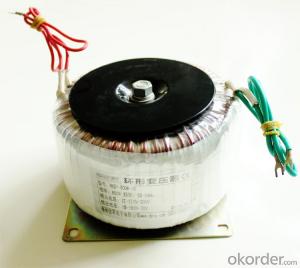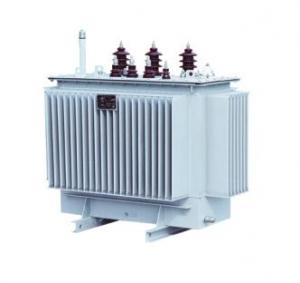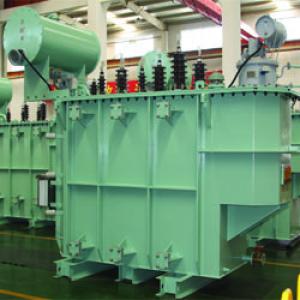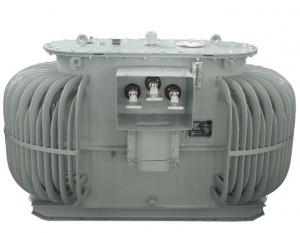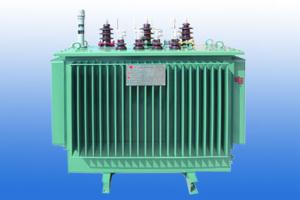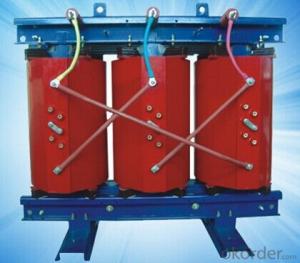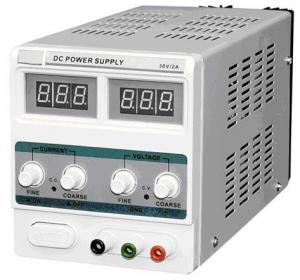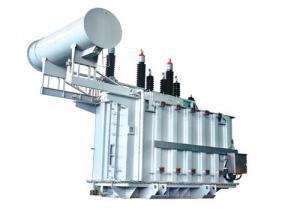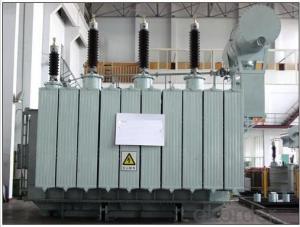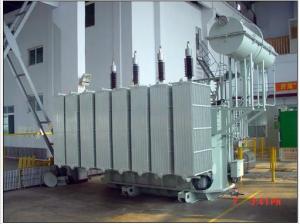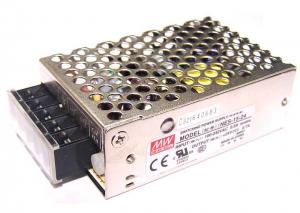S9-35kV Series Transformers
- Loading Port:
- Shanghai
- Payment Terms:
- TT OR LC
- Min Order Qty:
- -
- Supply Capability:
- 1000sets set/month
OKorder Service Pledge
OKorder Financial Service
You Might Also Like
1.Production introduction
The product conforms to the technical parameters and requirements of IEC60076 and China Standard GB1094 & GB/T6451, and a series of significant innovation is applied in aspects of material,design and structure.It has the features of high efficiency and low loss.It can save a lot of operation cost,and the social benefits are very significant.In conclusion,it is a nationally promoted new product and it is deeply favored by customers. Installation type:indoor/outdoor type Altitude:≤1000m Installation site:in places without corrosive gases and obvious dusts.
2.Applicable standards
IEC 60076 -1-2-3 2000 Power Transformer GB1094.1-2-1996 Power Transformer GB1094.3-5-2003 Power Transformer GB/T6451-1999 Technical parameters and requirements for three-phase oil-immersed power transformer.
3.Performance characteristics
1.The features of this product are high efficiency and low loss.It can save a lot of operation cost,and the social benefits are very significant.
2.The iron cores are made of the imported high-conduction magnetism,cold-roll,and grain-oriented silicon-steel sheets.The iron cores and windings adopt the vacuum drying and vacuum oil-filling processes,which make the internal moisture down to the very low level.
3.The conservator is hermetically sealed,which make the internal running oil to insolate with oxygen and moisture efficiently.
4.The above features guarantee the transformer does not need do replace the oil during the normal operation,greatly decrease the maintenance cost,and prolong the service life.
4.Main technical parameters of S9-M-50~2500/35 series of transformers
| Rated capacity (kVA) | Voltage combination(kV) | Connecting group id | No-load lossess (W) | Load-loss (W)(75˚C) | Short circuit impedance (%) | No-load current (%) | Weight(kg) | Overal dimension (mm) | Gauge (mm) | ||||
|---|---|---|---|---|---|---|---|---|---|---|---|---|---|
| High voltage (kV) | Tapping (%) | Low voltage (kV) | |||||||||||
| Body | Oil | Gross weight | Length x width x h | ||||||||||
| 50 | 35 | ±5 | 0.4 | Yyno | 215 | 1210 | 6.5 | 2.00 | 230 | 320 | 650 | 1150x720x1200 | 550x550 |
| 100 | 305 | 2020 | 1.80 | 380 | 400 | 980 | 1200x740x1300 | 550x550 | |||||
| 125 | 340 | 2380 | 1.75 | 440 | 430 | 1100 | 1250x780x1380 | 550x550 | |||||
| 160 | 360 | 2830 | 1.65 | 510 | 460 | 1200 | 1300x800x1400 | 660x660 | |||||
| 200 | 430 | 3300 | 1.55 | 600 | 500 | 1400 | 1400x840x1500 | 660x660 | |||||
| 250 | 510 | 3950 | 1.40 | 690 | 530 | 1500 | 1530x860x1580 | 660x660 | |||||
| 315 | 610 | 4750 | 1.40 | 800 | 570 | 1670 | 1600x890x1630 | 660x660 | |||||
| 400 | 735 | 5750 | 1.30 | 930 | 650 | 1950 | 1730x50x1700 | 660x660 | |||||
| 500 | 870 | 6900 | 1.30 | 1070 | 710 | 2300 | 1800x980x1800 | 820x820 | |||||
| 630 | 1040 | 8250 | 1.25 | 1300 | 830 | 2650 | 1900x1000x1850 | 820x820 | |||||
| 800 | 1250 | 9900 | 1.05 | 1600 | 900 | 3100 | 1950x1060x1900 | 820x820 | |||||
| 1000 | 1480 | 12150 | 1.00 | 1800 | 1080 | 3700 | 1980x1100x1950 | 820x820 | |||||
| 1250 | 1760 | 14600 | 0.90 | 2100 | 1150 | 4000 | 2010x1160x1980 | 820x820 | |||||
| 1600 | 2130 | 17500 | 0.85 | 2550 | 1250 | 4730 | 2040x1310x2000 | 820x820 | |||||
| 2000 | 2500 | 20680 | 0.75 | 3100 | 1400 | 5600 | 2170x1380x2700 | 1070x1070 | |||||
| 2500 | 2975 | 24500 | 0.75 | 3650 | 1500 | 6300 | 2300x1450x2900 | 1070x1070 | |||||
- Q: Transformers have any way of cooling
- Selection of strong air-cooled cooling mode, when the pump and fan lose power supply, the transformer can not run for a long time. Even if no load can not run for a long time. Therefore, two separate power supplies should be selected for use by the cooler. ????When the oil-water cooling method is selected, it can not be operated when the pump cooling water loses power. The power supply should select two independent power supplies.
- Q: b)Describe an important industrial application of one of the above devices (apart from transformers)C)Explain how this device works-that is ,what the electricity actually does
- A transformer is a device that allows you to easily and efficiently convert an AC voltage to a different voltage. When you do this, the current is converted in the opposite ratio. For example, if you have a 100 volt 1 amp source and you convert it to a 1000 volt source, it will have capability of 0.1 amp. It is made by winding wires on iron cores. See the reference for details. It is very important for the transmission of AC power, as it can be changed to a very high voltage for efficient distance transmission, and back to low voltage for use in homes. .
- Q: A I have a 230V/12V, 3A step-down transformer. What will happen at primary side of transformer if I attach a 12V/5A device at secondary side? Will primary side attributes (such as voltage or current) change?
- The primary will pull 261mA. more than likely, you won't see anything like voltage drop on the primary or secondary, but you will see (maybe) thermal stress on the transformer as you're exceeding it's VA rating. If you cool the unit properly, it could last indefinitely.
- Q: What is the vacuum impregnation of the transformer?
- To complete the winding and core assembly of the transformer, into a special dipping tank, the first vacuum, then open the lacquer,
- Q: I can find them at Wal-Mart, but the smallest size they have is a 4/5 and that is too big. I am looking for 3T or 4T sizes.I saw a Transformers jacket in size 3T and 4T at Wal-Mart, but they didn't have any shirts.Thanks!
- You can buy those Transformers or Ben 10 clothing in Kmart,Big W, some chinese shops and OKorder.
- Q: I am looking for a 220v transformer with these secondary voltages: 2x13v, 1x9v, 1x3vIt has to be at least 20va.I cant find this anywhere :/
- This is an unusual requirement. You may need 2 or more transformers. Do you really need the 2 voltages, or could you develop some of the lower voltage by using DC voltage regulators (if the lower voltages are used for DC)?
- Q: I have scavenge many transformer, but how do I know its VA rating (in order to utilize it without damage it)For voltage rating, we can measure using Multimeter, but what about maximum capable ampere ? Or we can only estimate by judging size of it ? Would be glad if there is a way to measure other values too !
- Do a load test to determine its approximately current rate. You need an AC voltmeter and AC current-meter and a high wattage variable resistor as its load. Suppose its secondary voltage at no load is 5 volts. Now apply the loading until it drops to about 4.8V ,read the current rate.
- Q: I read comments on youtube saying avatar cg looks like computer games.I liked avatar cg. transformers cg looks more real but I don't think movies always have to look more real.
- Avatar is really a wonderful epic movie. I love the CG cause they made the characters look more like the real actors, the place looks like an amazing paradise, and the story really touches my heart seriously although I know it's fiction. Plus the battle at the end is awesome, it's like when you watch Star Wars because you get to see these incredible creatures fighting machines and the human race
- Q: I am seeing the TRANSFORMERS series now for the 1st time, unfortunately I do not have all the EPISODES. Megatron turns to Galvatron, What Happens to OPTIMUS PRIME?? Does he change too?? Who is GALAXY CONVOY???What is the Final Episode of the Series, Who will be Alive at the End and Who is Defeated?? Please explain me in Detail,,,In Depth.Thanks in Advance.
- wow, I so sorry I tried asking my kids but they don't remember, I do remember that megatron turns into galvatron and yes optimus does change to something, but my son says optimus dies and optimus says before he dies he takes the all spark out of his chest and he says take care of it he hands it to hot rod and then hot rod hands it to the old truck guy the old truck guy give it to RC and RC gives it to a transformer that is red a blue and resembles optimus the optimus turns black. that was part of the movie. the televison series ( I am typing this as they are arguing over what happened ) perhaps the cartoon network website or even wikkipedia could help with recaps type into your web browser, wikkipedia transformers animated, or if you want info about the recent movie shown at the theaters, type in wikkipedia transformer.sorry my boys and I couldn't be of more help, I don't understand why they couldn't remember we used to watched this show together all the time before school.
- Q: By applying ohms law in the secondary circuit, IV(stepped up)/R , a stepped up voltage would result in an increase of current, i am aware that the step up transformer steps down current, but it is the secondary circuit that determines the current draws (ohm's law), and the primary current is multiples of itSo ?!!!!
- Transformer coils are electrically isolated, the voltage in the secondary being induced by that in the primary. There is therefore no constant current between. The POWER (WAV) in the primary has to have an an induced equal counterpart in the secondary. In this case, as the voltage in the secondary is larger, the current drops proportionally. At the end of the transmission line it's stepped down again, and then you get a current.
Send your message to us
S9-35kV Series Transformers
- Loading Port:
- Shanghai
- Payment Terms:
- TT OR LC
- Min Order Qty:
- -
- Supply Capability:
- 1000sets set/month
OKorder Service Pledge
OKorder Financial Service
Similar products
Hot products
Hot Searches
Related keywords


